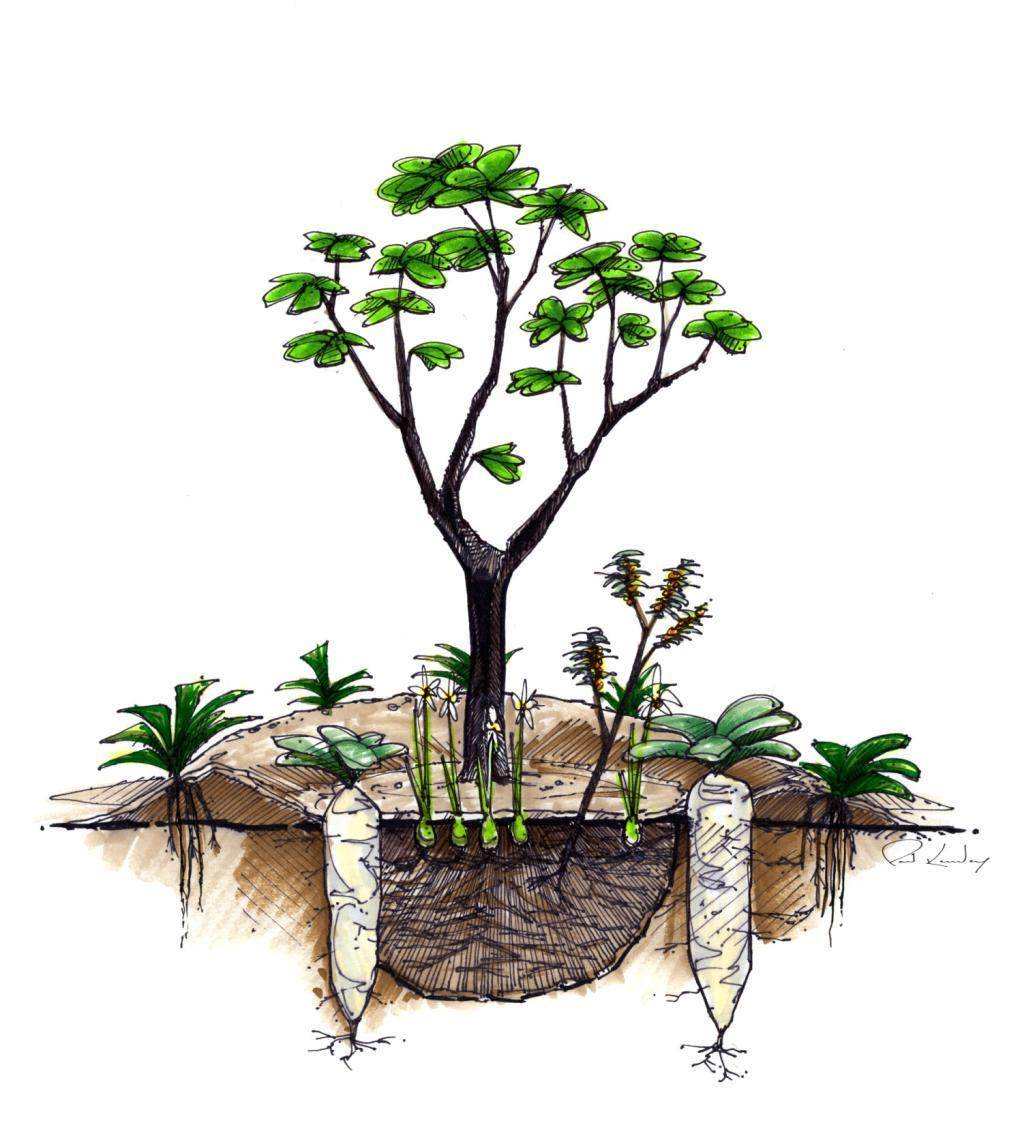
– Graham Bell, The Permaculture Way
 Good permaculture design brings all the elements in your landscape together to create a harmonious whole. Each planting, path, drive, patio, trellis, water feature is placed where it relates to the whole and flow. Parts of the design are not thought of separately but designed together to support each other. Well-designed permaculture landscapes will largely care for themselves with little or no inputs, allowing you to swing in the hammock more.
Good permaculture design brings all the elements in your landscape together to create a harmonious whole. Each planting, path, drive, patio, trellis, water feature is placed where it relates to the whole and flow. Parts of the design are not thought of separately but designed together to support each other. Well-designed permaculture landscapes will largely care for themselves with little or no inputs, allowing you to swing in the hammock more.
Permaculture can be applied from the smallest urban space to farms and entire watersheds. The aim is to produce systems that are ecologically sound and economically viable. It is adaptive to every site based on the goals and elements present.
Ecologia incorporates aspects of permaculture design in every design we create.
Permaculturist’s follow set processes much like architects, engineers, etc toward design but operate from a different set of ethics and principals.
Permaculture Ethics
Care of Earth
Care of People
Redistribution of surplus
Permaculture Principals or Prime Directives for Functional Design
Relative Location: Everything is connected. Choose best placement relative to surroundings to ensure matching yields and needs for each element or system.
Efficient Energy Planning: Pay attention to elevation, slope and aspect. Use “Sector” analysis and “Zone” planning. If broad initial patterning is well analyzed and good placements are made, many more advantages than we would have designed for become obvious.
Using Biological Resources: Work with Nature, not against. Pattern after natural systems. Life based, regenerative systems are synergistic, organizing and store energy.
Energy Cycling and Recycling: Catch, store, use, and recycle before letting go (cleaner than or as clean as before).
Intensive, Small Scale Systems: Start at your kitchen porch. Least change for the most effect. Work where it counts. Start small and expand on success. Stacking in space and time.
Accelerate Succession and Evolution: Plan for growth and change. Plan for loss. The more thoughtful ‘mistakes’ we make, the more practical solutions we may find.
Diversity is Dynamic Stability: Many connections are more important than many individuals. Whether biology, technology, or economics, diversity is an ally.
Edge Effect: The edge is where the action is. Edges are the site of dynamic interplay. 1 + 1 = 3. Increase beneficial edges, minimize problem edges.
Creative Problem Solving: Ask the right questions. Things always work both ways: the problem is the solution. (waste = unused resource, work = unmet need)
Yield: Yields occur only after payback for set-up and maintenance over the useful life of the system are accounted for. The longer lived, and lower maintenance the system, potentially the higher the total yield.
Recommended Reading and Sites:
- ‘Introduction to Permaculture’ by Bill Mollison
- ‘Gaia’s Garden’ by Toby Hemmingway
- Permaculture Research Institute – http://permaculture.org.au/
Posted In: Edible and Ecological Landscape Design

